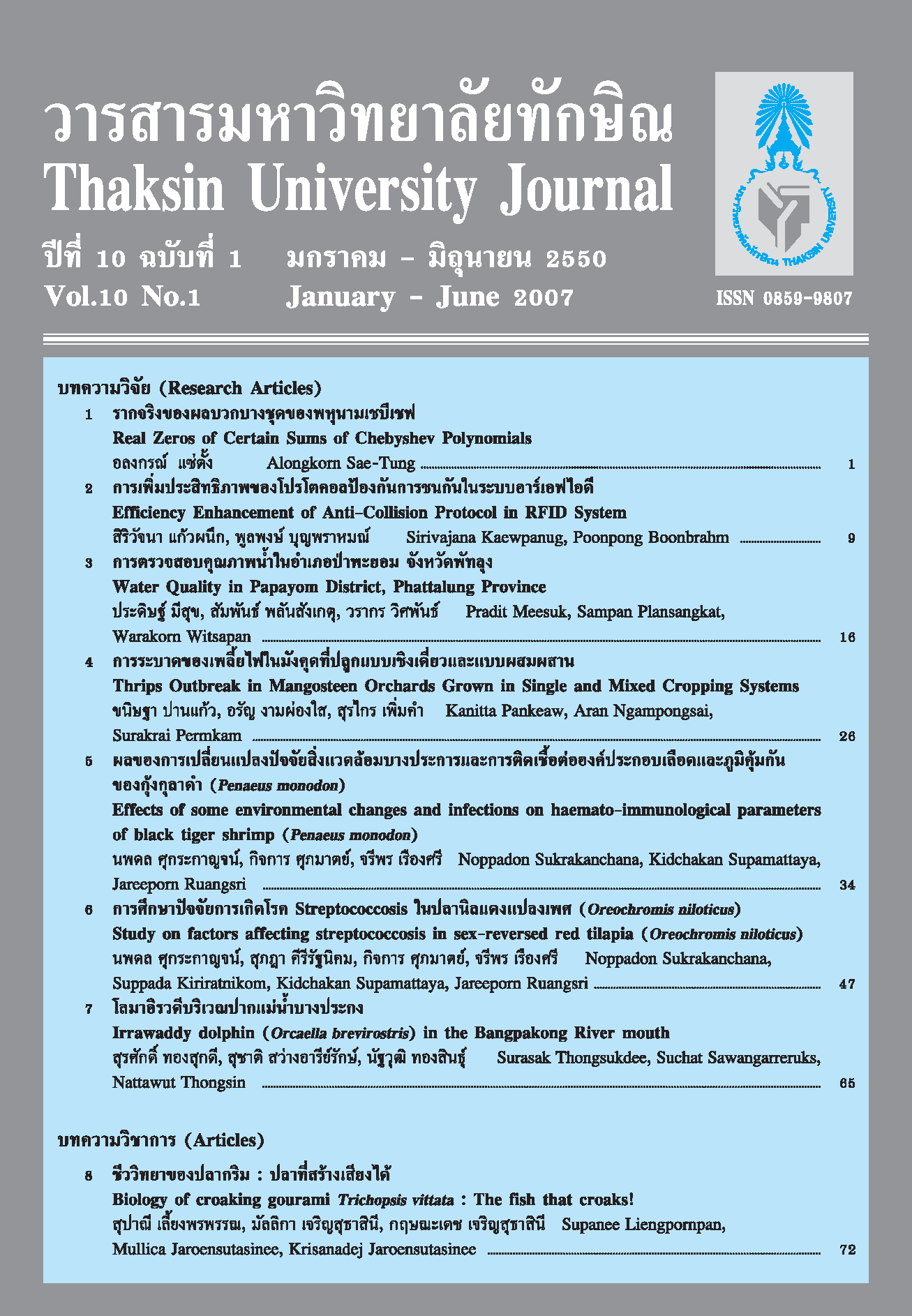การศึกษาปัจจัยการเกิดโรค Streptococcosis ในปลานิลแดงแปลงเพศ (Oreochromis niloticus)
Main Article Content
Abstract
Streptococcus spp. have been reported to cause streptococcosis accompanied with high economic losses in cultured freshwater and marine fish in many countries. In Thailand, streptococcosis was mainly reported in cultured Nile tilapia ( Oreochromis niloticus ) and sea bass ( Lates calcarifer ). However, the information related to disease outbreak is still limited. Thus, the studies on factors affecting streptococcosis in sex-reversed red tilapia ( Oreochromis niloticus ) were carried out. The results showed the virulence of Streptococcus spp. was in relation to routes of infection. An intraperitoneal injection has been suspected to affect the mortality rate of fish exposed to Streptococcus spp. We demonstrated environmental conditions, such as high stocking density (from 17 g/l) and extreme water temperature (24 or 30 ÌC) had a significant effect on streptococcal disease mortality in tilapia exposed to Streptococcus spp. by both intraperitoneal and cohabitation. However, significant reduction in mortality was seen in infected fish reared in high salinity (10 and 15 ppt). No significant difference between infected fish and control was observed in blood parameters investigated, such as red blood cell count, haematocrit, haemoglobin or serum protein content. However, fish survived from streptococcal infection exhibited higher antibody titre against Streptococcus spp. It is concluded that environmental conditions play important factors affecting susceptibility and mortality of Streptococcus spp. in infected sex-reversed tilapia. A health management strategy would be to reduce fish density and increase salinity thus lowering streptococcal disease mortality.
Article Details
Section
Research Articles


